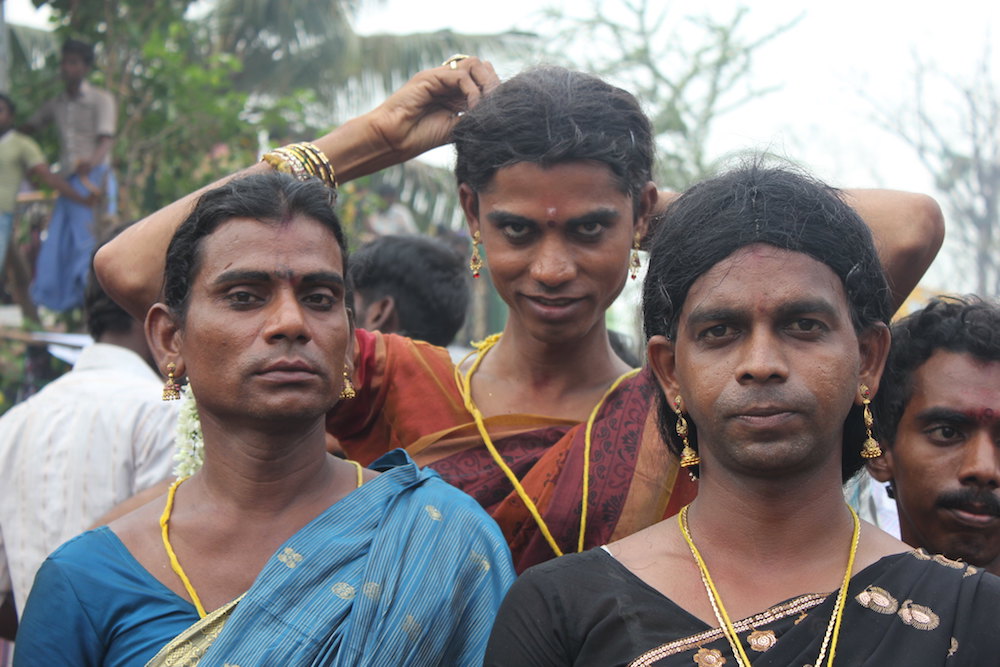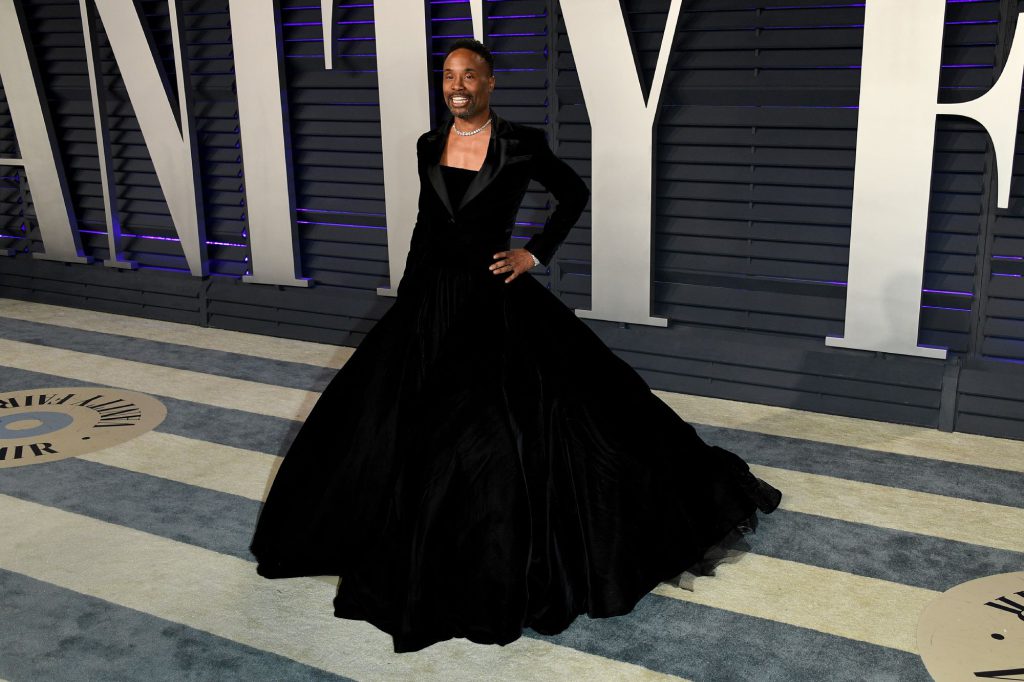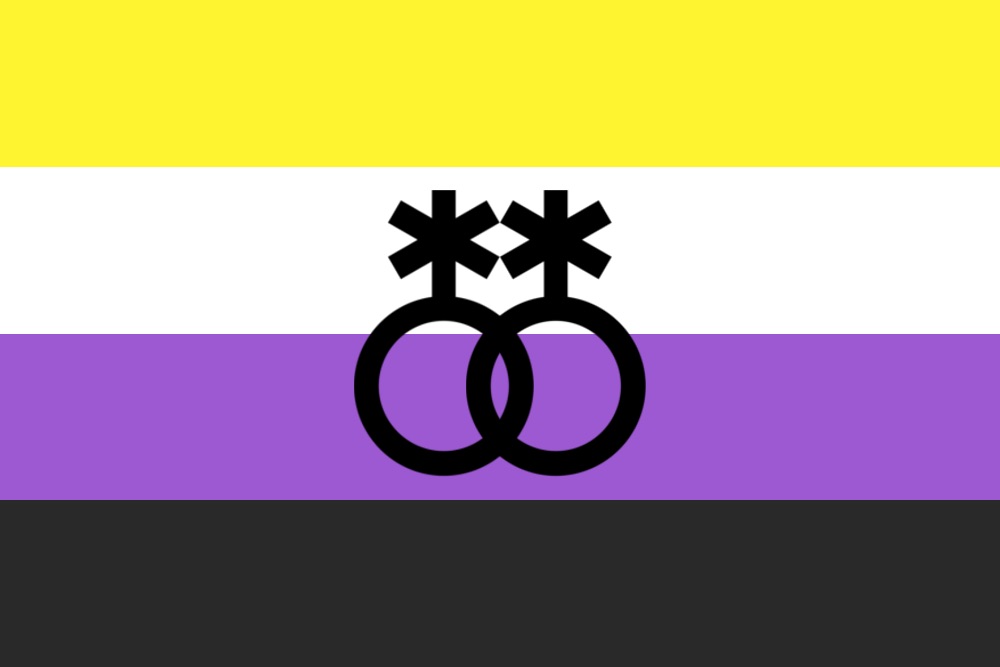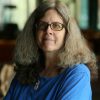My Nonbinary Child
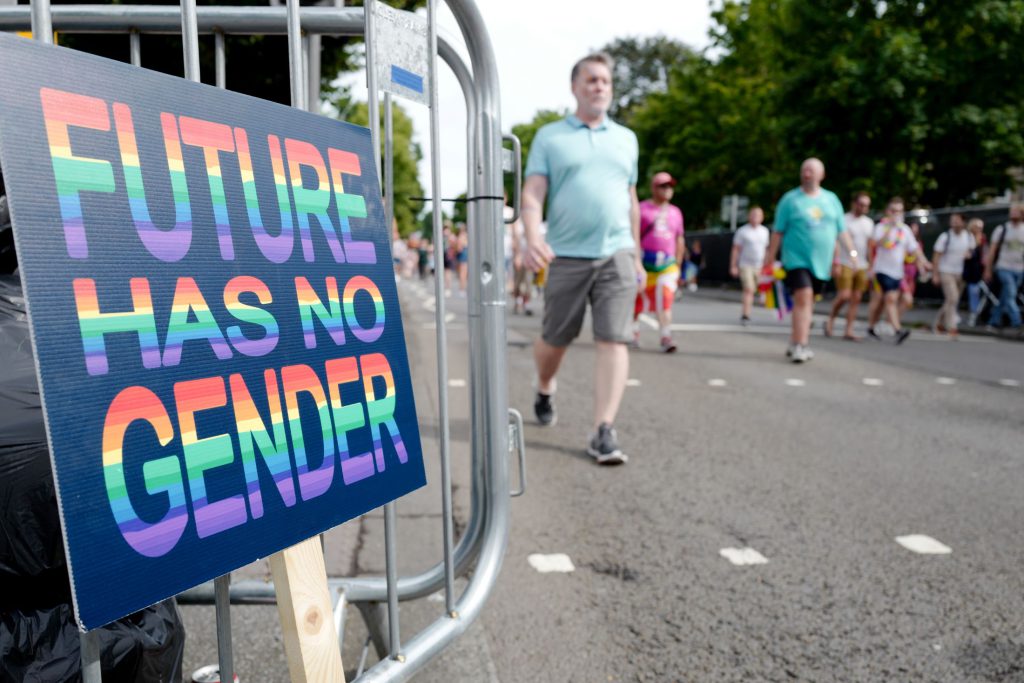
“Mom, how do you know you’re a woman?”
Sarah, my only child, startled me by asking this question during a telephone conversation this spring. I struggled to answer. Despite years of focus on gender in my anthropology teaching and writing, the best I could come up with was just that I experience my body as a woman and it has always felt natural to me to say that I am one.
Sarah then shared some big news: At the age of 26, they had come to realize that they are nonbinary and agender, neither woman nor man, and that the pronouns they/them/theirs suited them best.
I no longer had a daughter.
Absorbing that fact, I experienced a slight dizziness. Sarah asked if I would miss thinking in “mom-daughter” terms, and in that moment, the dizziness cleared. Theirs was a kind question, but this conversation needed to be centered on Sarah, not me.
In college, Sarah had come out to my husband and me as queer, and more specifically, as femme, which is a queer identity. The nonbinary and agender piece of their identity emerged more slowly. Embracing that identity has now allowed Sarah to feel freer and lighter in the world, a change that I see in their face and hear in their voice on Zoom calls.
Our small family rejoices in this outcome. If the pandemic weren’t keeping us 600 miles apart, I’d be hugging Sarah hard right now.
Right alongside this happiness, I am finding that this development takes some adjustment. The new information we’re taking on board at home and the linguistic habits that need to change require some work. This is the case even though, as a biological anthropologist, I have for decades read, taught, and written for the public about the panoply of gender identities. This intellectual grounding has helped, to be sure, because it gives me command of certain sets of basic facts. It did not, however, prepare me for the deep ignorance and resistance that Sarah has encountered, and I have encountered too, since sharing with others the news that my child is nonbinary and agender.
Before I delve into the emotional side of this experience, let me start with those basics. The term nonbinary means different things to different people. Individuals may identify as gender-fluid, because they feel like a man at certain times and a woman at others; may experience being a third gender; or may feel “gloriously genderless,” as Sarah put it on their own blog, Formidable Femme, where they write about gender, sexual freedom, and sexual trauma.
Sarah writes further: “I can’t identify a single thing that makes me a woman. When it comes to gender, I feel nothing at all.”
There are many ways, then, to be nonbinary; it’s a misconception to assume that the term refers to some sort of homogenous third gender. Nonbinary people may be transgender (with a gender identity that differs from the sex they were assigned at birth) or intersex (with a reproductive or sexual anatomy that doesn’t align with the traditional binary definitions of female or male). As biological anthropologist Molly Bearman writes, people in these groups “disrupt the idea that human bodies must be male or female” and “force a spectrum approach to traditional biological sex classifications.”
Anthropologists often make the point, as I have done with my students, that a multiplicity of gender identities is neither modern nor exclusively Western. Some Native American groups have a longstanding cultural practice of embracing different gender identities: the term two-spirit, for example, refers to expressions of nonbinary identity or sexuality. In India, hijras don’t fit into a binary view of gender. In Ecuador, a study of ancient figurines hints at nonbinary gender identities thousands of years ago.
As femme, Sarah chooses to dress and wear their hair in ways that society interprets as “feminine.” I have learned that this choice sits right alongside their agender identity. A person’s physical presentation in the world may not map onto their gender identity in any straightforward way; Sarah’s love of wearing black dresses no more makes them a woman than male actor Billy Porter was made a woman by wearing a ball gown to the 2019 Academy Awards.
I bring up Porter because he is a Black gay actor on the television show Pose, set in New York City’s ball culture of the 1980s and early ’90s. This show is transformative. The cast, including nonbinary and trans actors, presents that culture with unusual depth and complexity. Watching the first two seasons reinforced for me how far popular culture has come from, say, 15 years ago.
Back then it felt like a progressive act to show my anthropology of gender students a few excerpts from the TransGeneration documentary series, which followed four college students in their dorm rooms and during club activities as they embraced their trans gender identities. T.J. and Lucas had been assigned female at birth and transitioned to male, whereas Raci and Gabbie had been assigned male at birth and transitioned to female.
This was a groundbreaking presentation of trans lives, and yet it also created a problem. The documentary, however unintentionally, reinforced a binary view of gender. It suggested that there are two and only two choices: man or woman.
It seems dauntingly hard for some folks to truly grasp that a person can be neither man nor woman. In that classroom more than a decade ago, as I recall, we talked about the human brain’s pull toward the binary. I wanted discussion to be open and free, without anyone fearful of venturing a view.
Yet when a few students who are cisgender (people whose gender identity matches their assigned birth sex) suggested that trans people might be mentally ill, I felt at sea. I attempted not to quell the questions but instead to introduce a framework in which all gender identities are recognized as healthy, a matter of self-determination.
Sometimes I’d leave the class meeting worried whether I had done well enough. Nonetheless, my stake in the matter was pedagogical rather than personal. That has changed now.
Sarah has talked about their own happiness upon embracing their agender status. Occasionally, though, it’s pain that I see in their face and hear in their voice, and it’s almost always because of others’ responses to learning that Sarah is nonbinary and agender.
Sarah was requested to take on extra emotional labor, even to change themselves, just to make things easier for cis people.
After Sarah came out as agender this spring, one deeply conservative family member told me and Sarah’s father, by telephone, that Sarah must be going through a phase. Then she proceeded to tell Sarah the same. This person said flatly that Sarah was born a girl and remains a woman; deep down, she continued, Sarah must know this. While misgendering Sarah through the use of the wrong pronouns, she remarked that Sarah is “overthinking” their life. When Sarah insisted on being spoken to with respect, the relative replied that her own perspective deserves equal respect.
Sarah handles this kind of thing as well as any adult could—and they told me that the relative seems to be making a sincere effort to do better—but it hurts me that they have to hear dismissive things like this.
My emotions were stirred up as well when Sarah or I received some troubling responses from progressive friends we have in common, including some anthropologists. Intellectually, I know very well that it’s misguided to expect individuals in any constructed group—like “progressive anthropologists”—to think or express themselves in monolithic ways. Emotionally, though, I had expected better.
One anthropologist, for instance, attempted to explain Sarah to Sarah on social media. Couched in question form, the suggestion came forth that Sarah confuses people by presenting as female in appearance, and that this causes people to think Sarah wants to be perceived as a woman. This person told Sarah, “Think about this, please.”
Through this inaccurate conflating of appearance and identity, Sarah’s choices were scrutinized. Worse, Sarah was requested to take on extra emotional labor, even to change themselves, just to make things easier for cis people. There’s a parallel here to ways in which White people may expect their Black colleagues and friends to take up emotional labor surrounding issues of racism and White supremacy.
Another anthropologist wrote me that applying they/their pronouns to a single individual was disorienting for her. The singular “they” in fact has a venerable history, appearing in works by writers ranging from Shakespeare to Jane Austen. But more than that, I felt uneasy at the centering of personal discomfort over the rights of a person to choose their own pronouns.
At the same time, I believe that kindness goes a long way when a person pledges to take steps to learn, as both anthropologists did.
Certainly, I make mistakes myself when I speak about or to Sarah, more often than I ever thought I would. Those 26 years of habit don’t break easily; pronoun use is a “very deeply seated feature of language,” according to linguist John McWhorter. My husband and I have set up a system to help each other. When one of us is talking to or about Sarah and accidentally misgenders them, the other raises a hand high in the air. Less harsh than a verbal interruption, this signal works well to keep us focused and on track.
In 2020, intolerance and violence seem to have increased across much of the world, including against trans and nonbinary people. We can and must create a world where queer rights, including nonbinary rights, are human rights. I believe that coming to know the lived experiences of queer and nonbinary folks can help.
Sarah is a young adult making their way forward in the world as an agender person. I am thankful for their permission to tell a part of their story here. As I think how best to end this essay, I am filled with one upwelling sensation. I am proud to be the mom of a wonderful person—one who works tirelessly for social justice, and who lives as neither a woman nor a man. To love them as they are is a gift of my life.
































